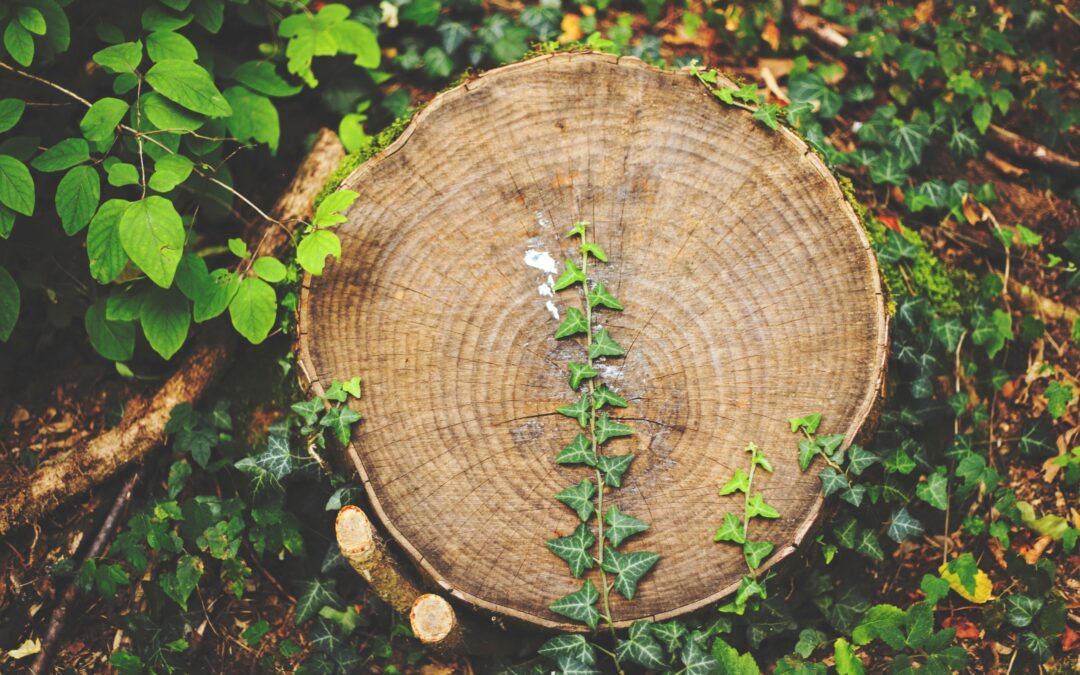Maybe you’ve heard that the number of rings a tree has is how old the tree is, but what else can tree rings tell us about trees? This short post gives a breakdown of tree bark and tree rings. Besides age of trees, we can also learn about climate, weather, diseases or invasive species and more. Delving deeper into the question of what do the rings on a tree mean beyond their age, it becomes clear that these natural archives offer a detailed chronicle of the environmental conditions the tree has faced throughout its life. Each ring marks a year of the tree’s life, allowing scientists and arborists alike to study them and gather data on past weather patterns, climate conditions, and even significant events such as forest fires, droughts, or periods of excessive rainfall. This remarkable ability to record and retain such information makes tree rings an invaluable tool for understanding not only the history of a tree but the broader ecological and climatic changes in the area where it has grown. Moreover, by analyzing these rings, we gain insights into how trees adapt to their surroundings over time, revealing the resilience and adaptability of these vital components of our natural world.
Age
The age of a tree is called diameter growth. It is a combination of the light and dark rings in a tree, amounting to 1 year of growth. The lighter part of the diameter growth is wider than the dark ring. Most of the tree growth within a single year happens in the spring and summer, where the lighter ring comes from. When growth begins to slow at the end of summer, the ring darkens and is called “summerwood” or “latewood.”
*Fun fact: In tropical climates where there are not distinct weather changes with four seasons, the annual rings are harder to see. Age is harder to tell.
Spread and Height
Trees grow in two directions- they grow upward and outward. The rings on trees are often narrower on trees that grow slowly through the year. Oak trees for example have a longer, slower annual height and width growth span. This means that the rings are often narrower and closer together. Trees like willows that have a quicker growth rate also have rings that are wider.
Understanding the unique features of oak tree rings can tell us much about these majestic specimens. A defining characteristic of oaks is that their rings are narrower and more closely spaced than those of faster-growing trees, such as willows. This is a reflection of the oak’s distinctive, slower rate of annual height and width growth. Also, seasons of particularly robust growth or environmental stress can cause deviations in their ring structure. For example, during favorable years, the rings might appear wider, while stressful events such as drought can induce narrower bands. Not only do these intricate patterns in oak tree rings reveal the tree’s age, but they also provide valuable information about the conditions it has encountered and endured.
Climate and Environmental Changes
Changes in the climate and environment such as infestations of disease or invasive species impacts the tree rings as well. Narrow rings could mean the year was dryer (less rainfall) or that there was a forest fire nearby. Lack of sun could also be an issue for a tree and the rings will be narrower. Trees will often overcome environmental factors and bounce back when conditions are at their optimum. Rings will be wider as growth improves.
Tree Rings Tell a Story
There are other things you can tell about a tree from its rings such as if it grew at an angle or leaned on another tree, if the wind was strong on one side of the tree vs the other, and if there were heavy branches that made waves in the rings at any point.
Tree rings tell a story of a tree’s life, and it’s awesome that we can pick out key moments for the tree and what it went through different years and stages of its growth.
What’s something that you learned about trees and their rings? Comment below!
And remember, you can always contact our team at Cutting Edge Tree Professionals by email at contact@cuttingedgetreeprofessionals.com or by calling us at 814-201-9757.
Sources:
https://www.theforestacademy.com/tree-knowledge/annual-growth-rings/#.YhPCSZZOmUk

